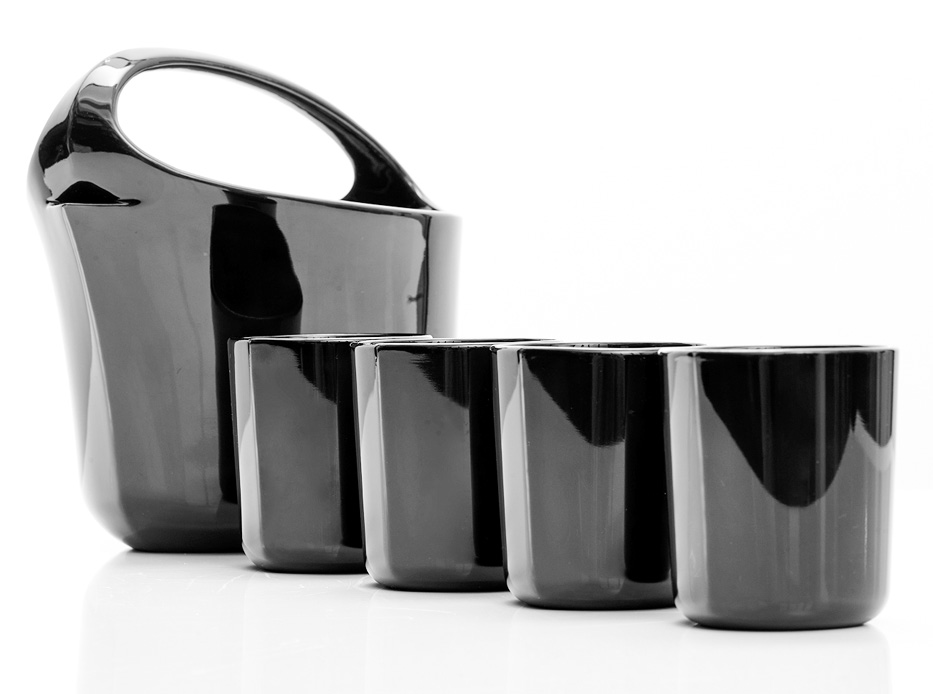Panel Discussion

Silver Prize winners (two works)(2/2)
TAMAYA (MC) ───── Thank you. Ms Rei NOJO, the Silver Prize winner, is present here today. Please come to the stage and share your comments.
NOJO ───── I’m Rei NOJO, studying at Kanazawa College of Art. I’m very happy to receive the Silver Prize. This work was a new challenge for me, including the expression of the eyes and coating techniques. It took a lot of trial and error, but I am very happy with the result. Thank you.
TAMAYA (MC) ───── Thank you, Ms NOJO. We would like to now move on to the next work. The Silver Prize winner for the Design Category is “Tipo” by Nicolas PINON and Dimitry HILINKA. We would like Mr YAMAMURA to give some comments.
Shinichi YAMAMURA ───── Congratulations to all the prize winners. This time, we received so many excellent works that we had difficulties in selecting the winners. Some works from overseas are especially magnificent.
Among them, the work selected as the Silver Prize winner for the Design Category is a tea set (a teapot and teacups) created as a joint production between two artists – Mr Nicolas PINON and Mr Dimitry HLINKA, from France. The form is very beautiful. According to the creator’s concept, the Tipo Tea Set is a modern tribute to French Art Deco and urushi. It draws inspiration from the SS Normandie liner. The spout which was based on the ship’s bow, is sharp and pointed, and very beautifully made. As a whole, this is a very gentle use of the tame-nuri (layered coating technique), skillfully expressing the characteristics of urushi.
Not only is this work beautiful, but it also proposes a new interpretation of urushi. When you pour hot water from the teapot to the cups, the color of the lacquer changes. The image shows the color change of the teapot to more red at the bottom where the hot water is. It is through the use of a new type of heat-sensitive pigment, which changes the color of the lacquer depending on the temperature.
Actually, I have been involved in the project of heat-sensitive urushi pigments. The pigment is taken from fresh squid organs then sealed in a microcapsule and embedded in the lacquer. This pigment is safe because it comes from harmless fresh squid. The creators have made the best of modern cutting-edge techniques in the process of traditional urushi treatment.
The creators have set the temperature to around 80°C to 90°C, perfect for tea or coffee. Today, you can get heat-sensitive pigments that react in 0.5°C increments. Most things that express temperature are chemical or electronic devices, however, the creators of this work have made clever use of primitive pigments. I think this is an interesting material with many potential uses. It is often used in thermometers that float in the bath to check the temperature of the water. This is my first time coming across tableware with this pigment. This teapot shows very pretty color changes. When you tilt the cup as you drink, you can see how the hot tea or coffee changes the color across the outer surface. The work is beautifully coated with urushi. The wooden base is also carefully and finely finished.
This is a very rare work because we haven’t yet come across such works utilizing cutting-edge techniques towards the creation of a new lifestyle in our traditional arts and crafts world. This technique was born in Japan. The creators visited Professor OHNISHI at Gansen Urushi Kobo (Studio) to study urushi as an apprentices. To this day they still visit the studio. I think they have researched urushi around Japan and they discovered the temperature-sensitive material. A new door is opened for the traditional techniques of urushi, with new and complex perspectives, which is very important for its future. It is said that urushi was already utilized during the Jomon period, more than 10,000 years ago. I think it has always been used in a variety of ways, such as an adhesive and to make beautiful patterns. Looking towards the future, I think it is wonderful that this Ishikawa International Urushi Exhibition 2023 will help promote this new technique and open it to the world. I feel as if we have opened the door to a new culture, with cutting-edge material and traditional arts and crafts techniques.
Many people say that they don’t like new techniques and technology, but I feel that if this material can be applied to our daily utensils including tableware and chopsticks, it can add more joy to our everyday life.

銀賞
Tipo
ティーポット : W18 × D14 × H17
カップ : W6 × D7 × H7(各)
2021
PINON, Nicolas & HLINKA, Dimitry (France)
